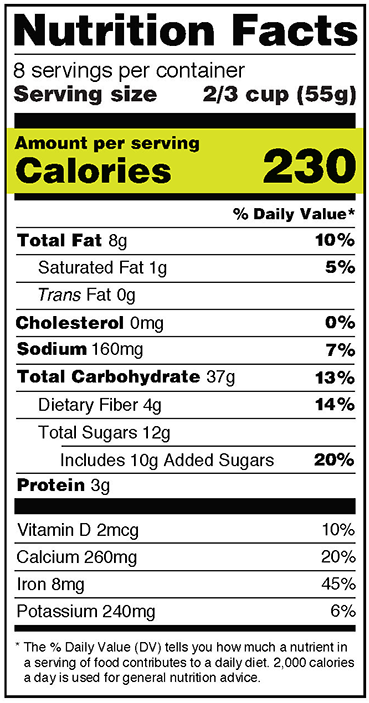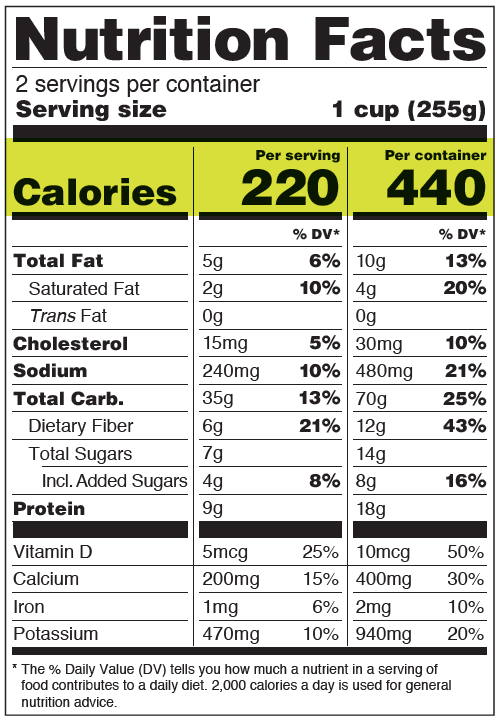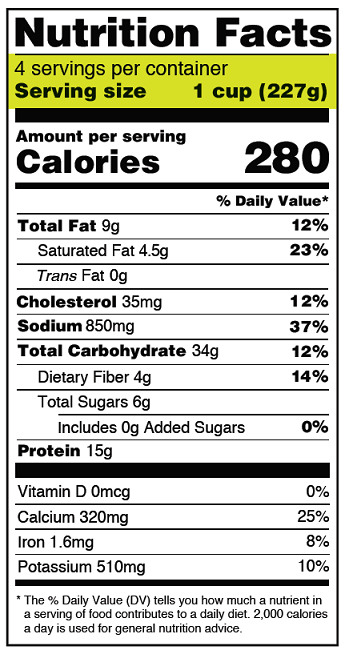The Nutrition Facts label on packaged foods and drinks has been updated to make it easier for you to make informed choices.
What Are Calories?
Calories refers to the total number of calories, or “energy” you get from all sources (carbohydrate, fat, protein, and alcohol) in a serving of a food or beverage.
Calories Go Big
Calories are now displayed in larger and bolder font on the new Nutrition Facts label to make the information easier to find and use.
Make Calories Work for You
.jpg)
To achieve or maintain a healthy body weight, balance the number of calories you eat and drink with the number of calories your body uses.
2,000 calories a day is used as a general guide for nutrition advice, but your calorie needs may be higher or lower depending on your age, sex, height, weight, and physical activity level.
Eating too many calories per day is linked to overweight and obesity. Find out how many calories you need at https://www.choosemyplate.gov/resources/MyPlatePlan.
Size Matters
Serving sizes on the Nutrition Facts label have been updated to better reflect the amount people typically eat and drink. It is not a recommendation of how much to eat. The nutrition information listed on the Nutrition Facts label is usually based on one serving of the food; however, some containers may also have information displayed per package.
You may want to pay attention to the serving size, especially how many servings there are in the container, so you know the amount of calories and nutrients you are consuming. One package of food may contain more than one serving, so, if you eat two servings you would be getting two times the calories shown on the label.
For example, if you ate one serving of the food shown on the label below, you would be eating 220 calories. And two servings would be 440 calories.
- The terms “fat-free” and “no added sugars” do not mean “calorie-free.”
- These food items may have as many calories as the regular versions, or more.
- Always check the Nutrition Facts labels and compare the calories and nutrients in the different versions.




